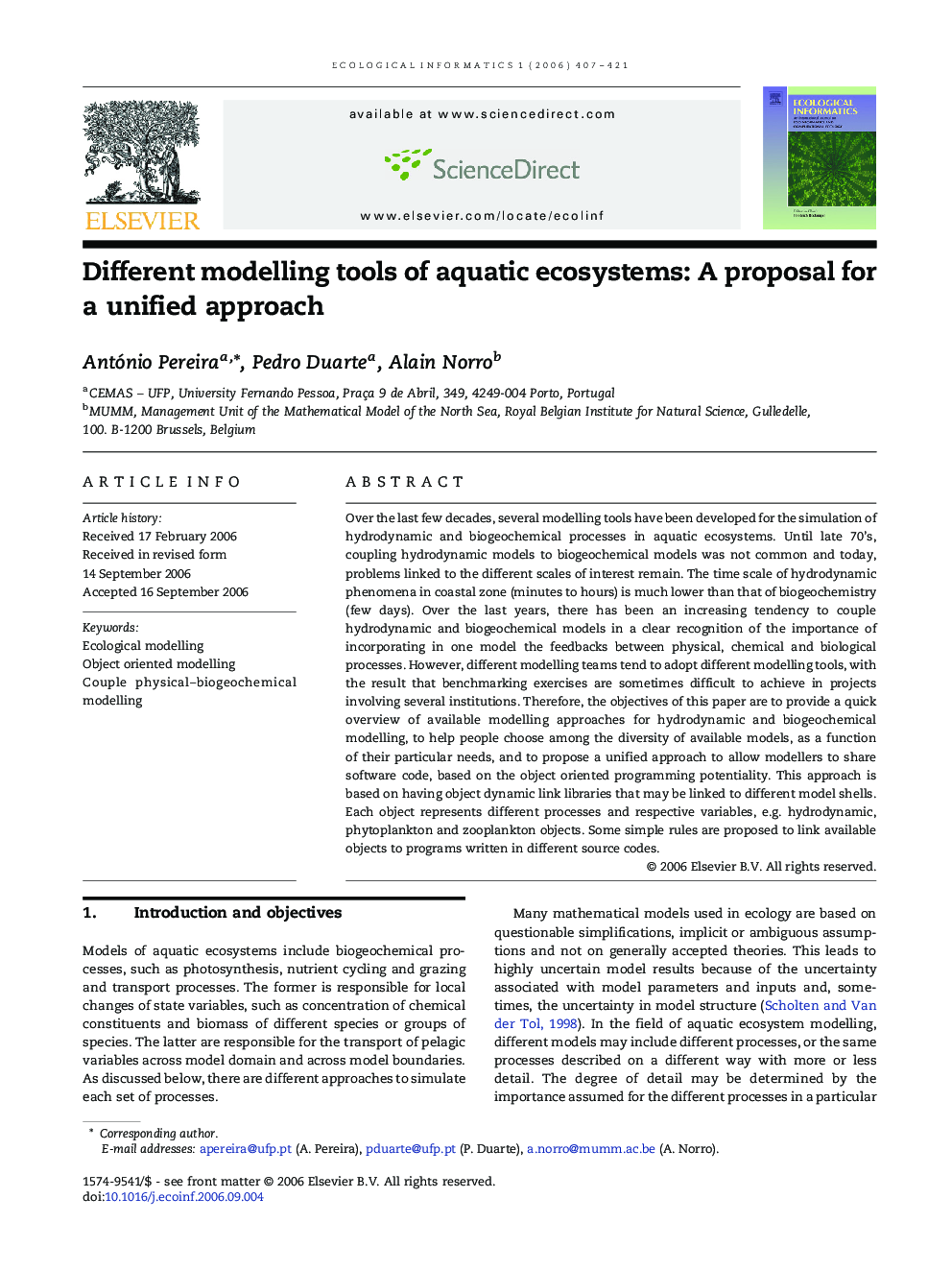| Article ID | Journal | Published Year | Pages | File Type |
|---|---|---|---|---|
| 4375408 | Ecological Informatics | 2006 | 15 Pages |
Over the last few decades, several modelling tools have been developed for the simulation of hydrodynamic and biogeochemical processes in aquatic ecosystems. Until late 70's, coupling hydrodynamic models to biogeochemical models was not common and today, problems linked to the different scales of interest remain. The time scale of hydrodynamic phenomena in coastal zone (minutes to hours) is much lower than that of biogeochemistry (few days). Over the last years, there has been an increasing tendency to couple hydrodynamic and biogeochemical models in a clear recognition of the importance of incorporating in one model the feedbacks between physical, chemical and biological processes. However, different modelling teams tend to adopt different modelling tools, with the result that benchmarking exercises are sometimes difficult to achieve in projects involving several institutions. Therefore, the objectives of this paper are to provide a quick overview of available modelling approaches for hydrodynamic and biogeochemical modelling, to help people choose among the diversity of available models, as a function of their particular needs, and to propose a unified approach to allow modellers to share software code, based on the object oriented programming potentiality. This approach is based on having object dynamic link libraries that may be linked to different model shells. Each object represents different processes and respective variables, e.g. hydrodynamic, phytoplankton and zooplankton objects. Some simple rules are proposed to link available objects to programs written in different source codes.
